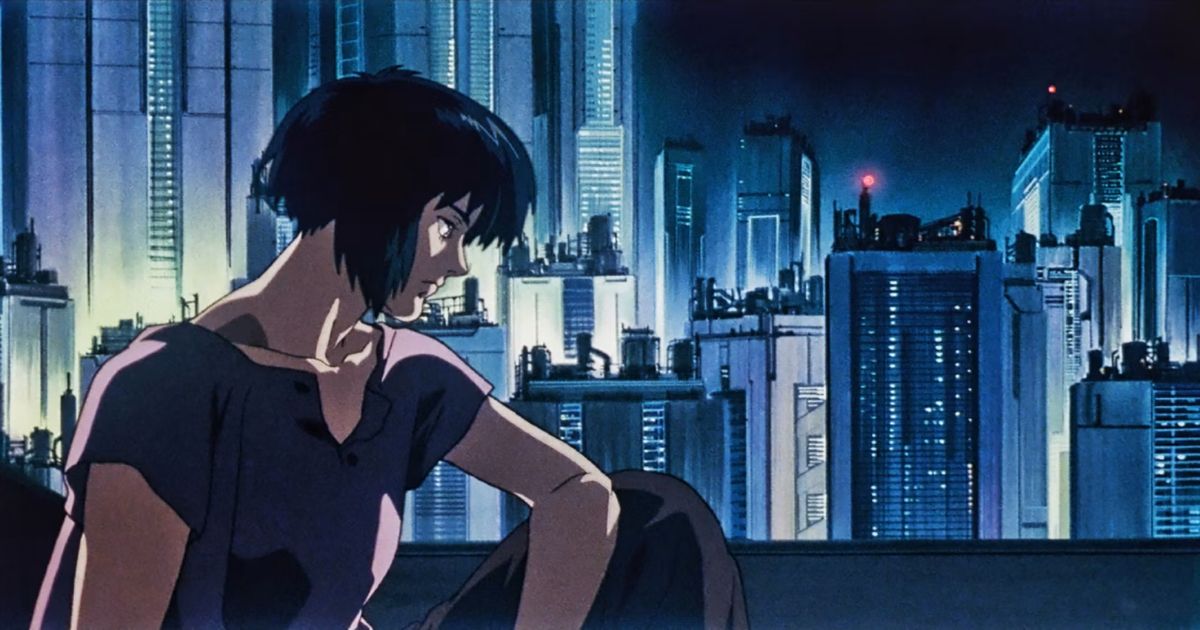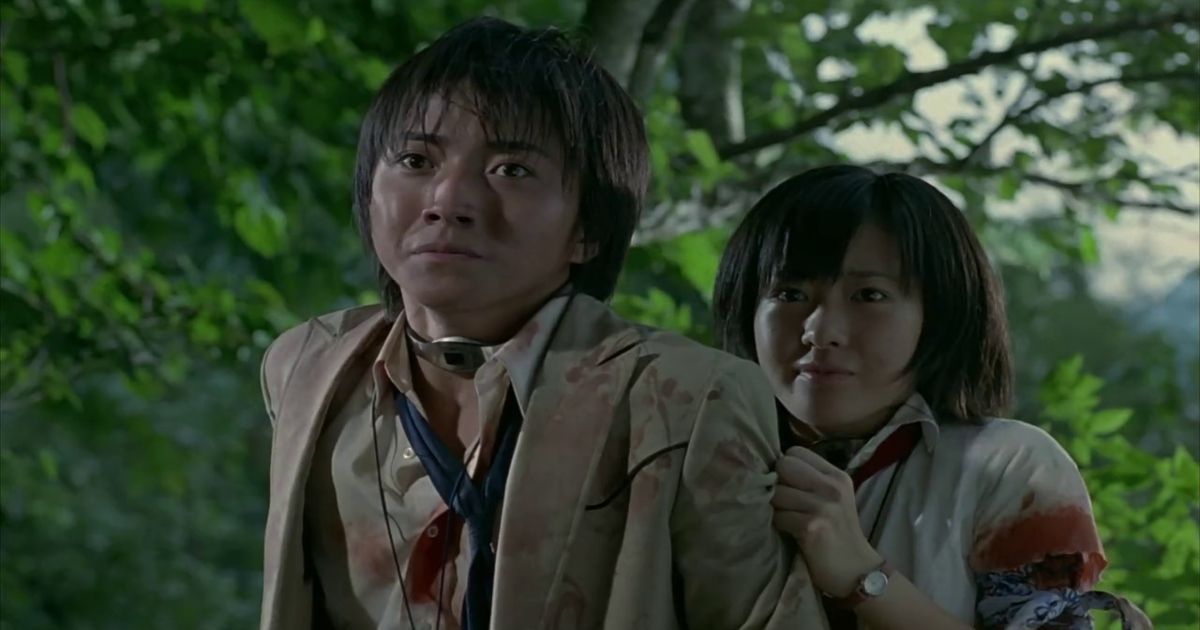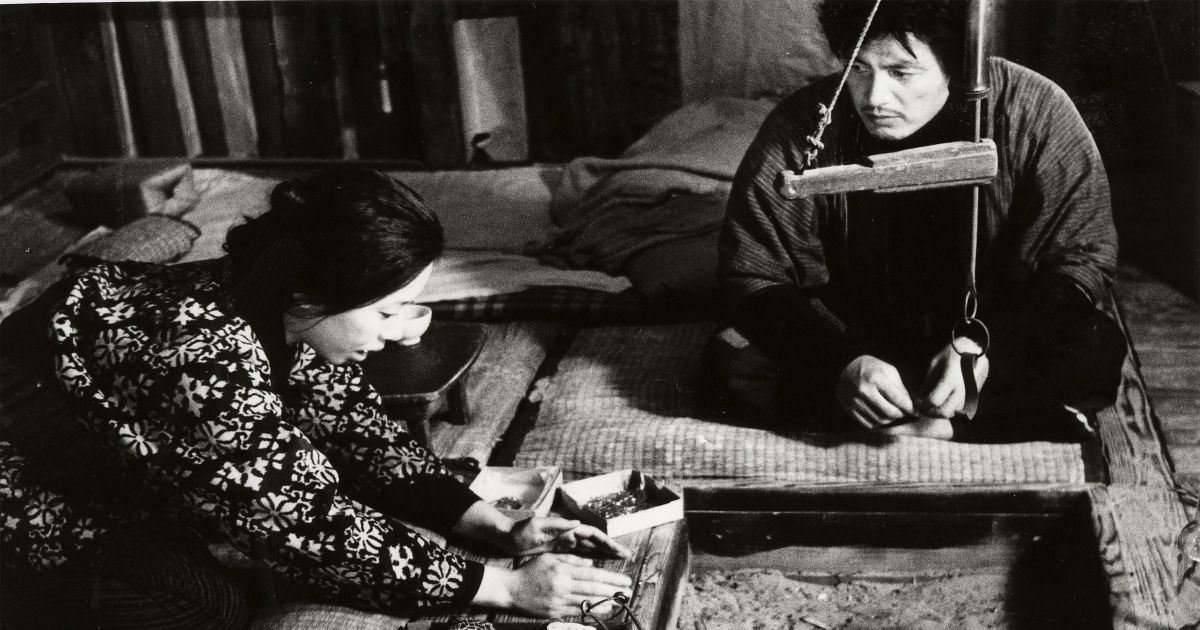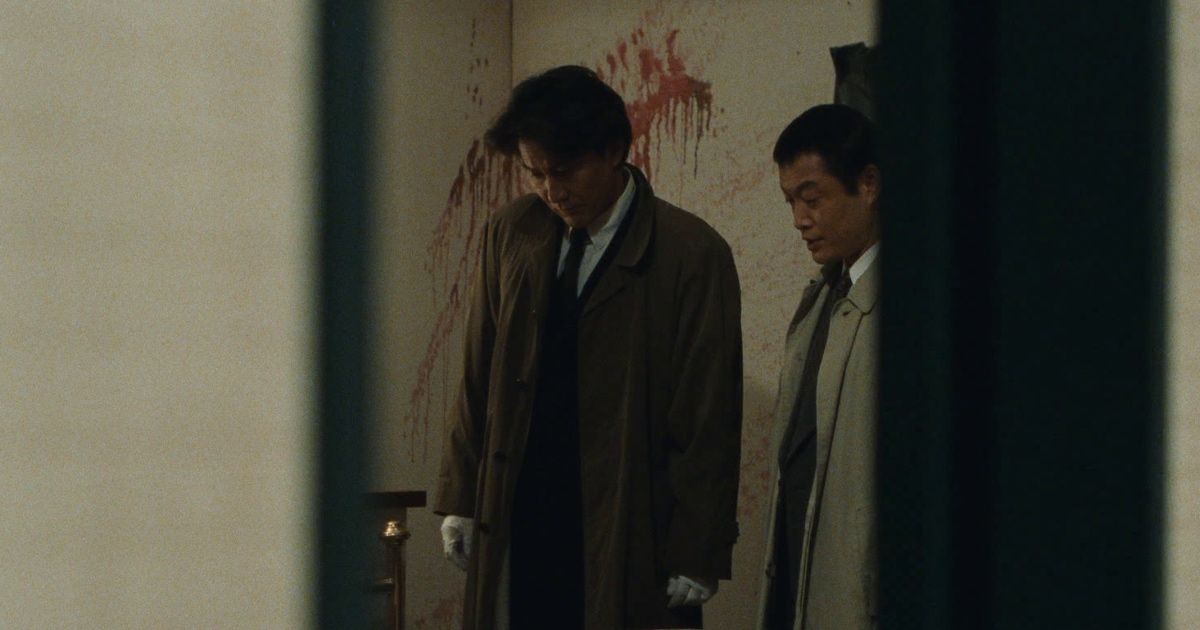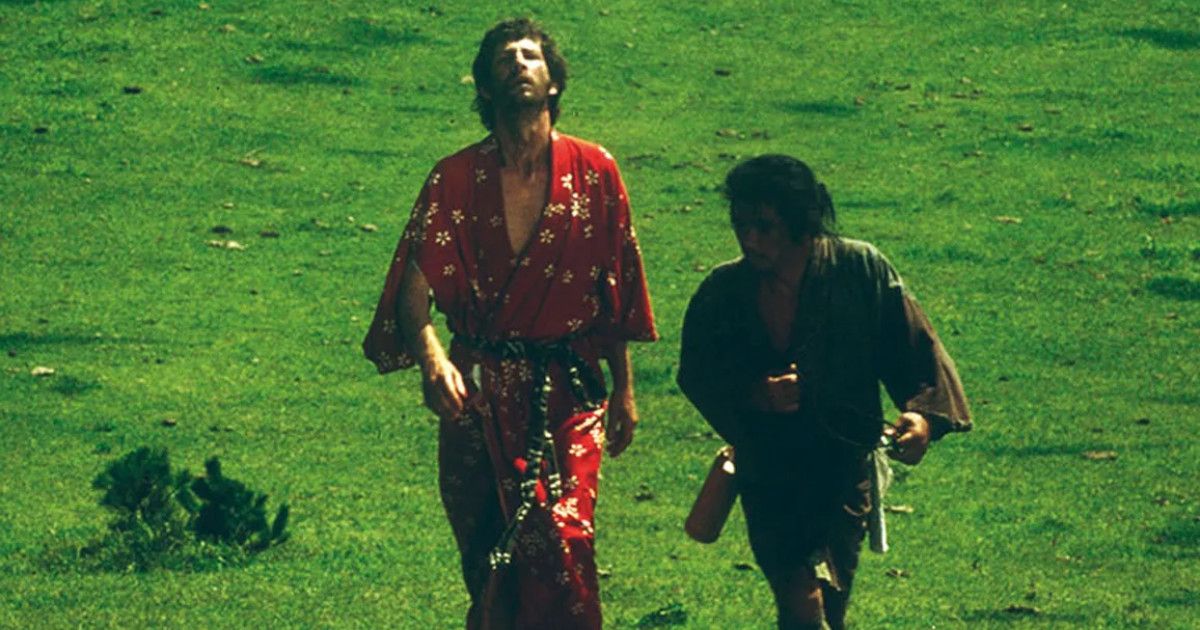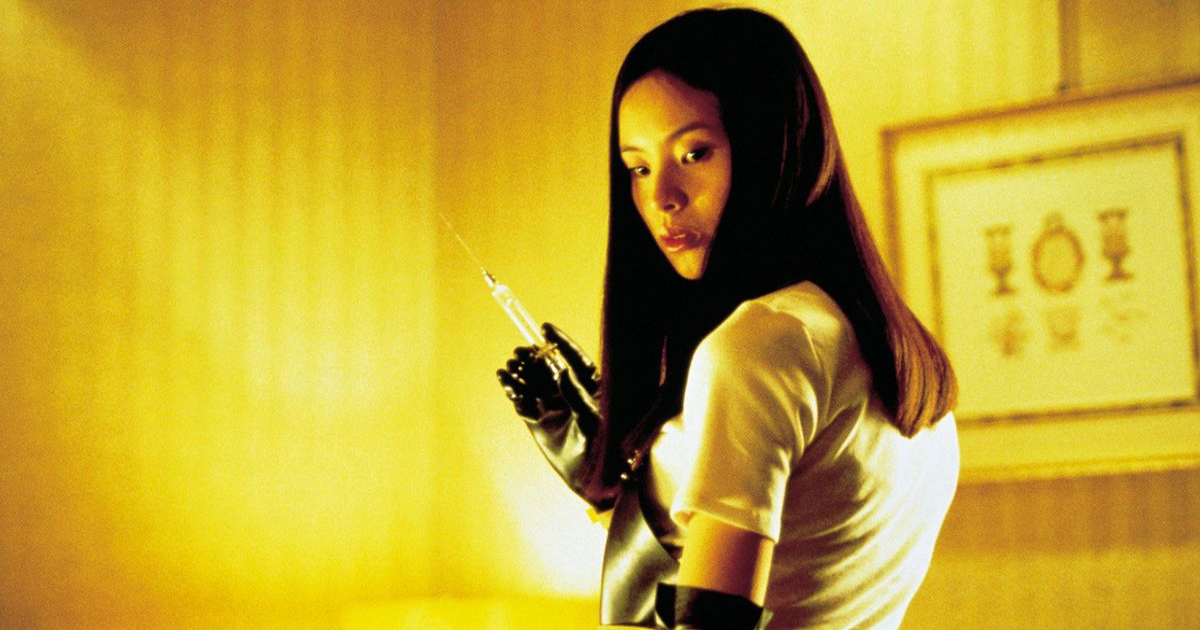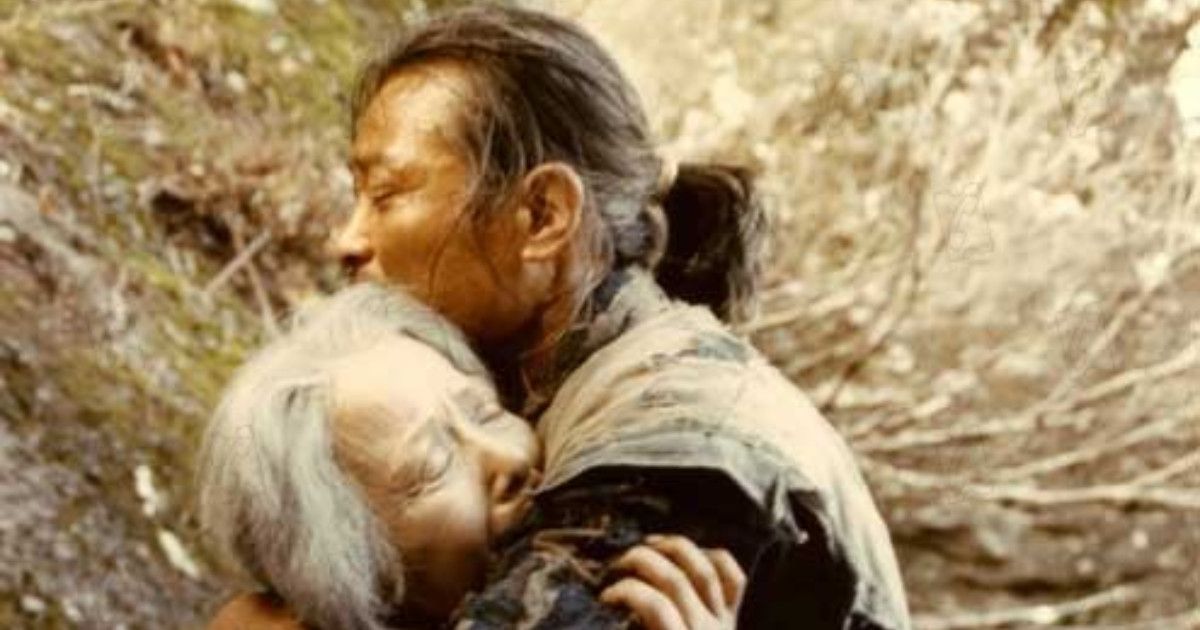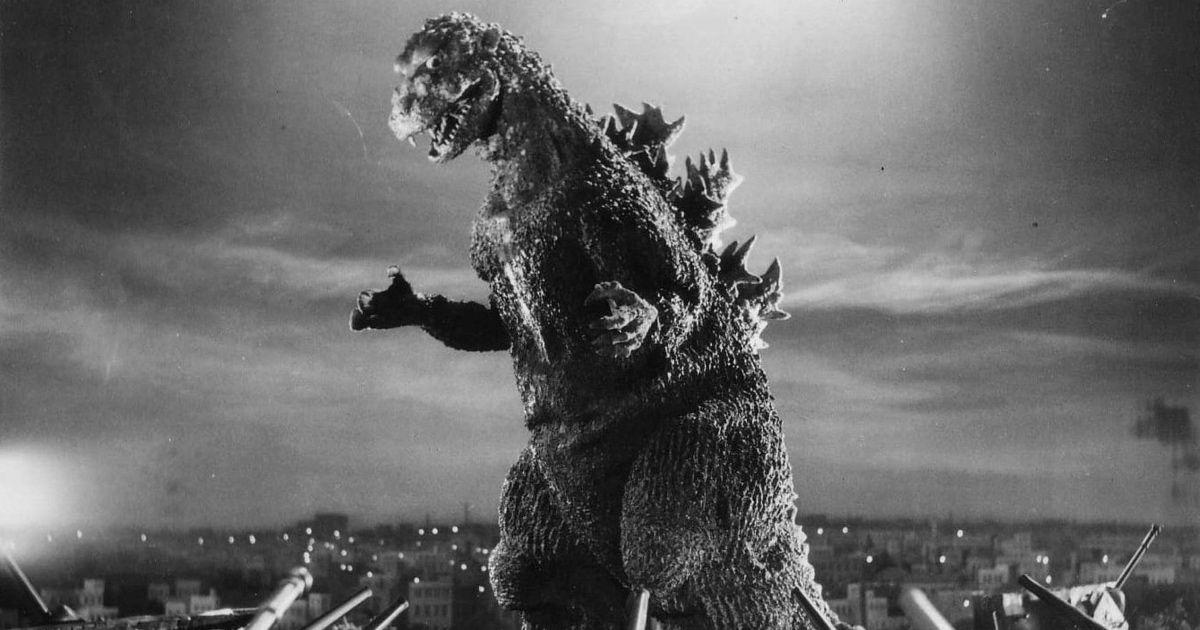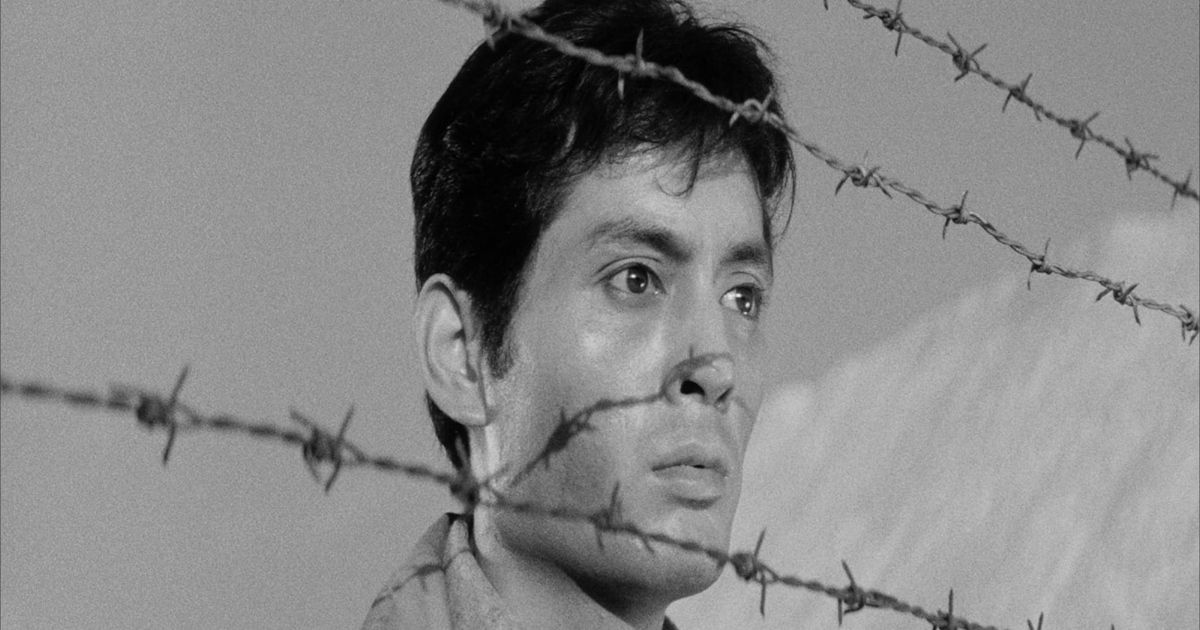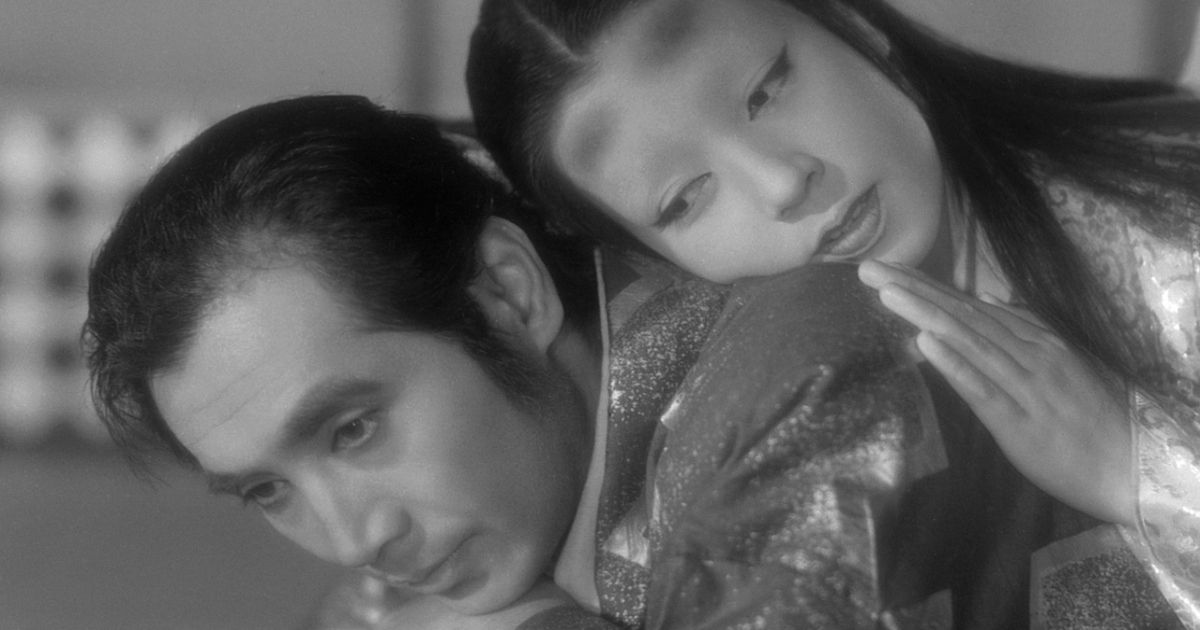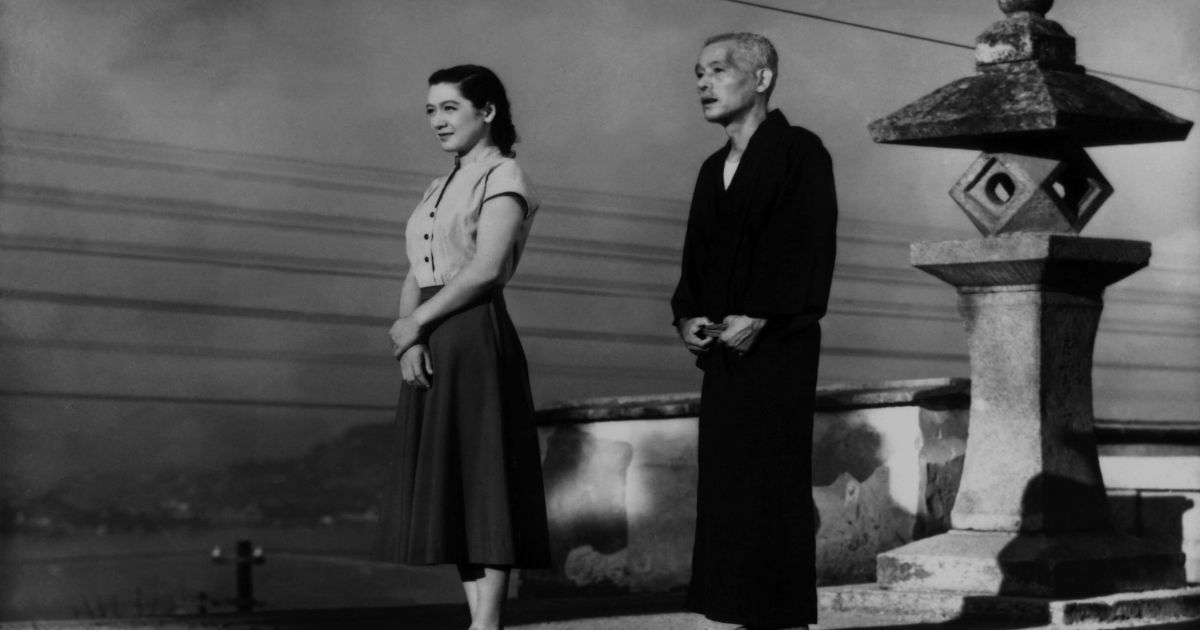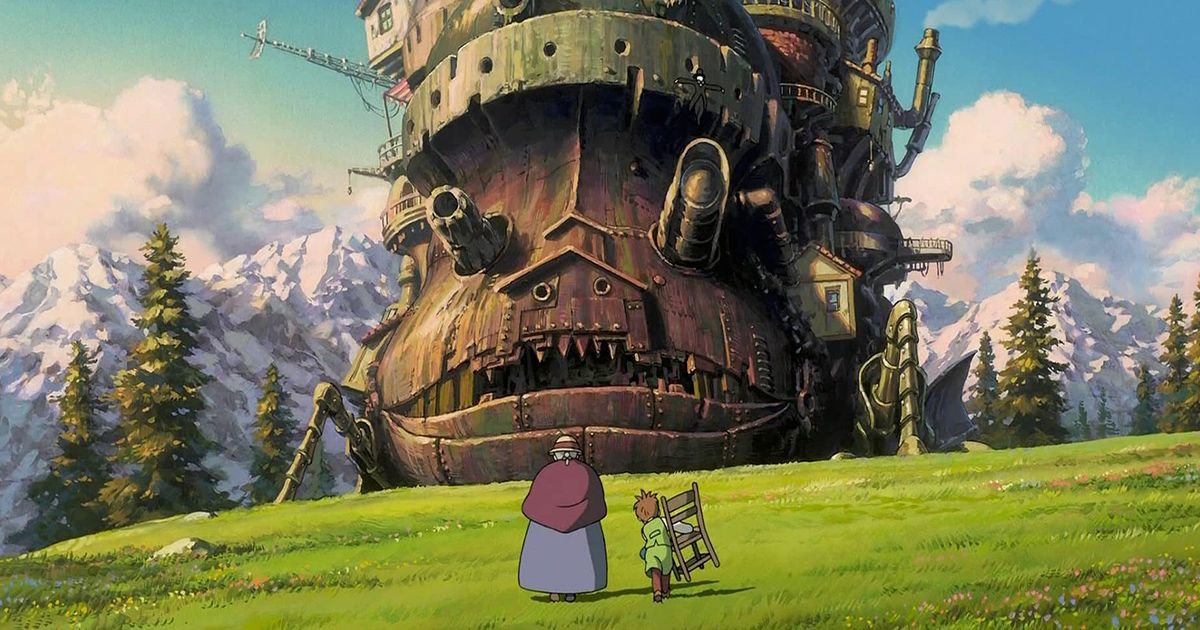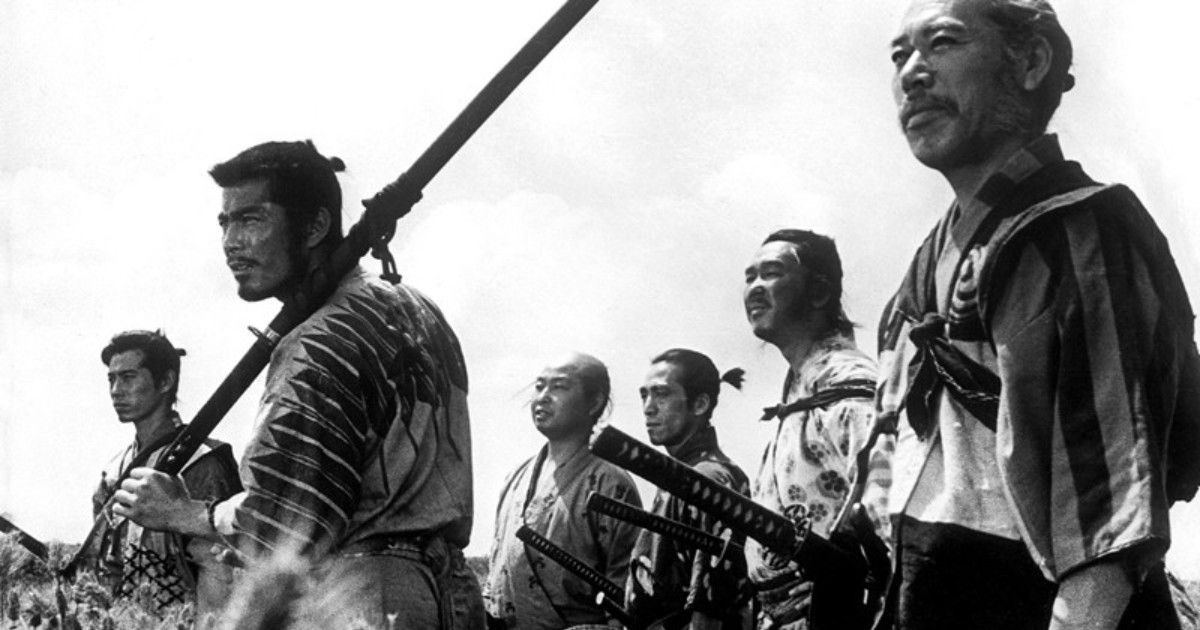A couple of these names should without a doubt ring a bell, as they’re commonly considered among the greatest filmmakers to ever live. But for the most part, American audiences will likely be acquainting themselves with a lot these legendary names of Japanese cinema.
Tokyo Story (1953), Seven Samurai (1954), Spirited Away (2001) — these titles are so renowned because their respective directors were masters of the craft, whether you know their names or not. Their filmographies span every genre imaginable and received widespread acclaim every step of the way. All that said, these are the fourteen best Japanese film directors of all time, ranked.
14 Katsuhiro Otomo
One of two filmmakers on the list who exclusively worked in the realm of animation, Katsuhiro Otomo is best known for his seminal cyberpunk action film Akira (1988). Critics and audiences alike have cited it among the greatest films ever made since its release in the late eighties, carving out a path for Japanese pop culture to permeate into the minds of Western audiences.
Set in a dystopian 2019, it follows the leader of a bike gang named Shōtarō Kaneda whose childhood friend gains telekinetic powers. But that cult classic isn’t the only film under Otomo’s directorial belt, as he also made Steamboy (2004) to, granted, far lesser critical acclaim. It’s worth noting, but Otomo lands on this list for Akira by itself.
13 Mamoru Oshii
The filmography of Mamoru Oshii is replete with anime films, but unlike Otomo, he’s also dabbled in the realm of live action: take Avalon (2001, for instance. It wasn’t nearly as well acclaimed, but it did spawn a video game of the same name. So, it was popular enough. But his animated outings are what truly stand out in his career.
Angel’s Egg (1985) and Jin-Roh: The Wolf Brigade (1999) both received widespread acclaim upon release, and have held up just wonderfully. It’s safe to say, however, that Ghost in the Shell (1995) will forever remain Oshii’s magnum opus. It’s one of the best films from its year, regardless of region, with a legacy that helps land Oshii at number thirteen.
12 Kinji Fukasaku
The most famous films of Kinji Fukasaku include Shogun’s Samurai (1978), a jidaigeki, Message From Space (1978), a space opera, Virus (1980), a post-apocalyptic stint, and Samurai Reincarnation (1981), a fantasy film. Then, there’s Battle Royale (2000). American director Quentin Tarantino cited that particular dystopian action piece as his favorite film of the twenty-first century, and it’s had quite the cultural impact on the Battle Royale genre of video games, films, and other mediums.
But on top of Tarantino, the filmography of Fukasaku has also influenced directors such as John Woo and William Friedkin. He received nine total nominations for Director of the Year at the Japan Academy Film Prize, and won three of those. For that fact alone, he deserves a spot on the list, let alone his seminal release in Battle Royale.
11 Hiroshi Teshigahara
The first Japanese New Wave director on the list, Hiroshi Teshigahara is also the first person of Asian descent to receive an Academy Award nomination for Best Director. He accomplished this feat thanks to his seminal piece Woman in the Dunes (1964), which follows Niki Junpei as an entomologist who meets the titular woman one day while searching for tiger beetles.
It’s a fantastic piece that blends general storytelling with cinematography to create an incredible motion picture that received widespread acclaim. Of course, Teshigahara made plenty of other films throughout his time as a director, like Pitfall (1962) and The Face of Another (1966). But it’s also worth noting that he practiced other crafts like calligraphy, ikebana, opera, painting, and pottery. A true jack of all trades.
10 Kiyoshi Kurosawa
As a director, Kiyoshi Kurosawa has worked in a variety of genres. Just last decade, he made three science fiction films with Real (2013), Before We Vanish (2017), and Foreboding (2017), along with two thrillers such as Seventh Code (2013) and Creepy (2016). But without a shadow of a doubt, the most prominent genre worth noting with regard to Kiyoshi Kurosawa would have to be horror.
Throughout the 2000s he made horror films such as Pulse (2001), and in the 2010s he released Daguerreotype (2016). But his seminal release, the magnum opus of Kyoshi Kurosawa is undoubtedly Cure (1997), a psychological thriller following a string of murders where the perpetrators remember nothing of their crimes. It’s an intriguing premise that’s seen into brilliant fruition, and it lands Kurosawa at number ten.
9 Masahiro Shinoda
After coming to prominence during Japan’s New Wave and working as an assistant director with someone who makes this list’s upper echelon, Masahiro Shinoda separated himself from any partnerships with dozens of films under his directorial belt. Perhaps the most notable is Silence (1971), based on a novel of the same name from 1966 by Shūsaku Endō.
It was made into an American film of the same name from director Martin Scorsese, with Andrew Garfield in the lead role. But the director at hand had other popular films like Pale Flower (1964) and Assassination (1964), about the yakuza and samurais, respectively. They’re all worth checking out.
8 Takashi Miike
Although Kiyoshi Kurosawa is perhaps known as the more prominent filmmaker with regard to the horror genre, Takashi Miike gave Japan perhaps their scariest picture of all time with Audition (1999). Sure, Ring (1997) by Hideo Nakata was more acclaimed by critics upon their respective releases. But Audition is now considered among the greatest horror films of all time, regardless of region.
Its plot follows Shigeharu Aoyama, a widower who stages a series of auditions searching for romantic involvement. But when he lands on a prospect, the woman’s dark past emerges and turns the plot on its head. Miike had several other notable works like Dead or Alive (1999) and Ichi the Killer (2001), but Audition will always be his greatest contribution to cinema.
7 Shōhei Imamura
The prior pick on the list in Miike actually worked as an assistant director early in his career for Zegen (1987), directed by Shōhei Imamura, who comes in here at number seven. A key figure of the Japanese New Wave, Imamura’s influence expands far beyond that he had on Miike, as his expansive filmography holds more accolades than most directors on this list.
Imamura is only director from Japan with two Palme d’Or wins under his belt: one for The Ballad of Narayama (1983), the other for The Eel (1997). And for the Japan Academy Film Prize, those films won Picture of the Year and Director of the Year, respectively. That’s only the start of his long list of accomplishments, rendering Imamura a clear pick for the top ranks.
6 Ishirō Honda
Although he worked in various genres, Ishirō Honda is best remembered for popularizing the kaiju genre of Japanese media, which conventionally involve giant monsters. Of course, the film that put Honda on the map in this regard was Godzilla (1954), which he directed along with seven of its sequels.
Recognized by Guinness World Records as the longest-running film series of all time, the Godzilla franchise isn’t all that Honda contributed to the realm of kaiju cinema. He also made Rodan (1956) and Mothra (1961), for example, both of which go down as absolute staples of the subgenre. They land Ishirō Honda here at number six.
5 Masaki Kobayashi
Director Masaki Kobayashi is perhaps most well-known for his trilogy of epic war films The Human Condition, starting with No Greater Love (1959), continuing with Road to Eternity (1959), and ending with A Soldier’s Prayer (1961). The projects follow a Japanese pacifist named Kaji has he traverses the totalitarian society of Japan amid World War II. Considered controversial at the time of release, it has since become among the most respected film trilogies ever born out of Japan.
His other projects include Harakiri (1962) and Samurai Rebellion (1967), both samurai films, along with a horror anthology titled Kwaidan (1964). When considering each entry of his filmography, he undeniably deserves a spot on this list.
4 Kenji Mizoguchi
Although you may be unfamiliar with this name and even with his many masterful works, the films Kenji Mozoguchi provided to the cinematic world are among the most well-respected of all time. The Story of the Last Chrysanthemums (1939), The Life of Oharu (1952), Ugetsu (1953), and Shanso the Bailiff (1954) — these are all masterclasses of storytelling that helped put the country on the international map.
Along with two others that will soon follow, Mizoguchi represented what’s now considered the “golden age” of Japanese cinema: the 1950s, basically. Their work was truly inspirational, defining the medium for an entire generation of fans. Without a doubt, Mizoguchi deserves this spot among the top five.
3 Yasujirō Ozu
Every fan of film in general should become acquainted with the legendary work of Yasujirō Ozu. His magnum opus Tokyo Story (1953) remains a staple of Japanese cinema seventy years after its initial release, and holds up brilliantly in terms of overall quality. But that famous piece of motion picture history is far from the only film worth writing home about throughout Ozu’s critically acclaimed career.
He also had Late Spring (1949), Early Summer (1951), and An Autumn Afternoon (1962), just to name a few. But Tokyo Story will forever be his masterpiece, coming in at number three on the 2012 Sight & Sound poll of the greatest films ever made. Its resonant legacy is well-warranted, and ultimately lands Ozu here at number three.
2 Hayo Miyazaki
A massive name in the realm of animation, Hayo Miyazaki has created an entire world of cinema that has resonated fondly with audiences and critics alike across the world since he debuted with The Castle of Cagliostro (1979). Of course, his animation studio — called Studio Ghibli, which will likely ring a bell — has become one of the most prominent players in the animation game, especially in the twenty-first century thanks to titles like Spirited Away (2001) and Howl’s Moving Castle (2004).
But Miyazaki had been writing and directing masterclasses of storytelling for decades at that point, with other prominent releases under his belt being Nausicaäof the Valley of the Wind (1984), My Neighbor Totoro (1988), and Princess Mononoke (1997). But that’s just to name a few. In the end, Miyazaki was undoubtedly among the first few names to materialize in your head upon seeing the title of this article, and his popularity alone lands him on the list. But the quality of his films propels him to the penultimate spot.
1 Akira Kurosawa
There was never any doubt about who’d come out on top, as the career of Akira Kurosawa has had a larger impact on the film industry than nearly any other director ever, regardless of region or era. Rashomon (1950), Seven Samurai (1954), and The Hidden Fortress (1958) — those are three masterpieces of the craft, with each representing Japan’s golden age better than just about any other film from Kurosawa’s contemporaries.
But in the following decade, he put out Yojimbo (1961), Sanjuro (1962), and High and Low (1963), along with a couple of less-notable others. And in the end, his legacy speaks for itself. This guy has an entire Wikipedia page dedicated to his filmmaking techniques, another for a list of his filmography, one that lists his accolades, another that details the critique of his work, and a page that chronicles remakes of his films by other directors. That’s a lot of information, and the existence of each page is well warranted.
This story originally appeared on Movieweb


